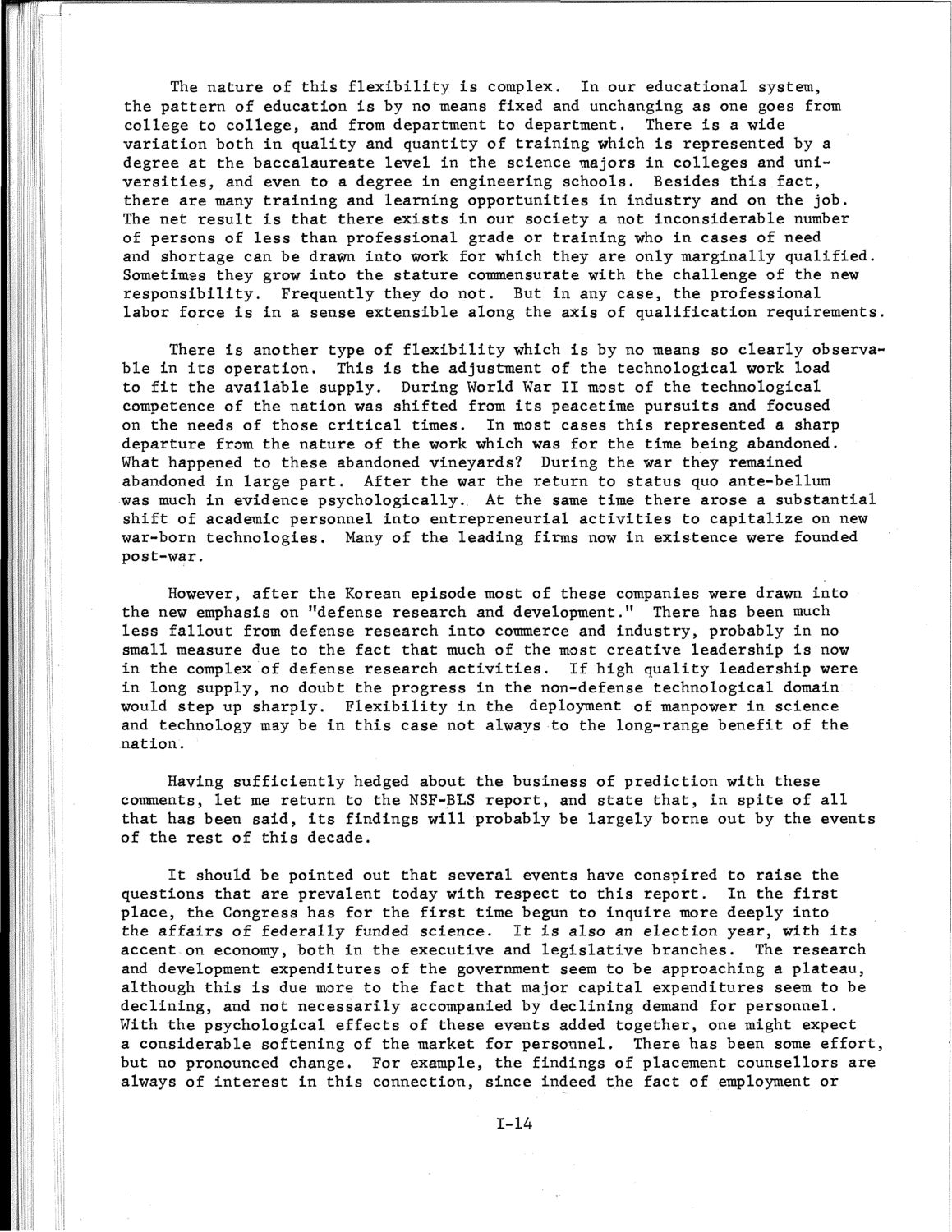| |
| |
Caption: SWE - Proceedings of the First International Conference of Women Engineers and Scientists
This is a reduced-resolution page image for fast online browsing.

EXTRACTED TEXT FROM PAGE:
The nature of this flexibility is complex. In our educational system, the pattern of education is by no means fixed and unchanging as one goes from college to college, and from department to department. There is a wide variation both in quality and quantity of training which is represented by a degree at the baccalaureate level in the science majors in colleges and universities, and even to a degree in engineering schools. Besides this fact, there are many training and learning opportunities in industry and on the job. The net result is that there exists in our society a not inconsiderable number of persons of less than professional grade or training who in cases of need and shortage can be drawn into work for which they are only marginally qualified. Sometimes they grow into the stature commensurate with the challenge of the new responsibility. Frequently they do not. But in any case, the professional labor force is in a sense extensible along the axis of qualification requirements. There is another type of flexibility which is by no means so clearly observable in its operation. This is the adjustment of the technological work load to fit the available supply. During World War II most of the technological competence of the nation was shifted from its peacetime pursuits and focused on the needs of those critical times. In most cases this represented a sharp departure from the nature of the work which was for the time being abandoned. What happened to these abandoned vineyards? During the war they remained abandoned in large part. After the war the return to status quo ante-bellum was much in evidence psychologically. At the same time there arose a substantial shift of academic personnel into entrepreneurial activities to capitalize on new war-born technologies. Many of the leading firms now in existence were founded post-war. However, after the Korean episode most of these companies were drawn into the new emphasis on "defense research and development." There has been much less fallout from defense research into commerce and industry, probably in no small measure due to the fact that much of the most creative leadership is now in the complex of defense research activities. If high quality leadership were in long supply, no doubt the progress in the non-defense technological domain would step up sharply. Flexibility in the deployment of manpower in science and technology may be in this case not always to the long-range benefit of the nation. Having sufficiently hedged about the business of prediction with these comments, let me return to the NSF-BLS report, and state that, in spite of all that has been said, its findings will probably be largely borne out by the events of the rest of this decade. It should be pointed out that several events have conspired to raise the questions that are prevalent today with respect to this report. In the first place, the Congress has for the first time begun to inquire more deeply into the affairs of federally funded science. It is also an election year, with its accent on economy, both in the executive and legislative branches. The research and development expenditures of the government seem to be approaching a plateau, although this is due more to the fact that major capital expenditures seem to be declining, and not necessarily accompanied by declining demand for personnel. With the psychological effects of these events added together, one might expect a considerable softening of the market for personnel. There has been some effort, but no pronounced change. For example, the findings of placement counsellors are always of interest in this connection, since indeed the fact of employment or 1-14
| |